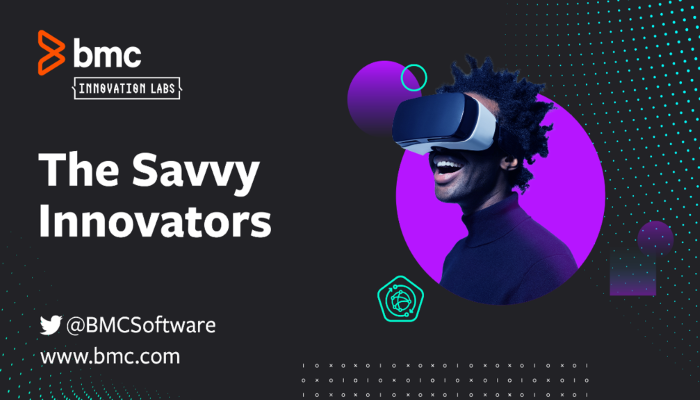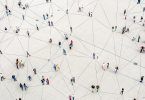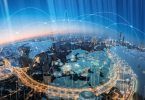Imagine a world where your connected home, car, and energy provider can work together to run more efficiently, lower your energy bill, and help reduce the impact on climate change. At work, armies of microsensors perform their own analytics to detect impending equipment failures, and digital twins work hand-in-hand with robots to help solve them. Around the globe and beyond, net-zero devices share intelligence, deliver personalized services, and transform everyday experiences—all while harvesting their own energy. That world is coming faster than you think.
A recent two-part episode of The Savvy Innovators, a Voice of America podcast series sponsored by BMC, featured a wide-ranging conversation among four thought leaders in the fast-evolving and interconnected Internet of Things (IoT) and edge computing realms: Sam Lakkundi, Vice President of Innovation and Head of BMC Innovation Labs at BMC; Tom Soderstrom, Director of Chief Technologists at Amazon Web Services (AWS) Public Sector; Aditya Varma, Director of Digital Innovation and Transformation of an Indian Federal Agency; and Angela Nicoara, Professor of Computer Science and Head of the Internet of Things (IoT) Innovation Lab at Lucerne University of Applied Sciences (HSLU), Switzerland. Highlights follow.
Smart things take over the world
Organizations across every industry are beginning to seize upon the opportunities that edge computing and IoT present. In fact, IDC published a report in January predicting worldwide edge spending to hit $176 billion this year—up 14.8 percent over last year—and reach nearly $274 billion by 2025. Meanwhile, the number of IoT devices worldwide is forecast to almost triple from 9.7 billion in 2020 to more than 29 billion in 2030. Soon, edge and IoT infrastructure, pervasive connectivity, and lower technology costs will ensure that people, devices, and data can communicate, collaborate, and innovate efficiently and affordably.
While IoT and edge have been gaining momentum for several years, the COVID-19 pandemic provided a critical boost as numerous real-world applications gained new relevance. “The rapid adoption of IoT technologies during the pandemic has defined and transformed numerous companies in different fields, such as healthcare, smart buildings, and industrial IoT,” says Angela. Today, major industry verticals with more than 100 million connected devices in place include electricity, gas, water supply, waste management, retail, wholesale, transportation, and more.
In turn, this broad adoption of IoT devices and the edge computing services they leverage offers a powerful economic opportunity for communication services providers (CSPs). “The IoT has long been viewed as the capability that will help communication service providers extract better returns from capital-intensive 5G infrastructures. These organizations have seen wins regarding revenue generation and cost savings,” says Sam.
Even government agencies, typically slow to embrace emerging technologies, are getting on board. “This is making a big difference for government organizations, helping accelerate their digital transformation initiatives,” says Aditya. “IoT devices, smart sensors, and edge compute promise to break traditional data silos and connect the edge to the cloud and to the core. The ability to collect, aggregate, and analyze data at the point of its inception with minimal latency is the essence of edge IoT. Government organizations have understood this.”
For Tom, the big picture is one of pervasive data and intelligent services transforming all kinds of experiences throughout the day. “IoT solutions can be implemented in our homes and offices, in factories and oil fields and agricultural fields, in planes and ships, in automobiles—everywhere. The goal is harnessing the data generated by your IoT edge devices and enabling them to act intelligently.”
IoT goes to work
Smart devices from doorbells, toasters, and vacuum cleaners to chatty digital assistants have already become a familiar presence in many homes. As with the emergence of smartphones and mobile apps, businesses will need to scramble to catch up with the technological sophistication and convenience people already enjoy in their personal lives. “Increasing employees’ level of comfort with technology in the workplace is a logical next step after they’ve adopted the same technology at home,” says Tom. Aditya says there’s more work to be done in this effort: “For major adoption of IoT in the workforce, the UI [user interface] and UX [use experience] must be convenient and friendly. For the public sector, it needs to be integrated into playbooks to facilitate wider adopted by orchestration.”
Employee experience and business productivity use cases may be a work in progress, but the opportunities on an enterprise level are hugely compelling. “A smart enterprise consists of a whole bunch of devices that can talk to each other,” says Tom. “You can collect all this information, put it in the cloud, run machine learning and reinforcement learning on it, and push it back out to these new devices. It was mind-boggling what we could do. Some of our experiments delivered full return on investment in three days with lab safety, water savings, and electricity savings.”
Within industrial IoT, companies can digitize processes, transform business models, and improve performance and productivity while decreasing waste. They can also find and fix emerging problems much more quickly. “IoT predictive maintenance analytics captures the state of industrial equipment to identify potential breakdowns before they impact production, resulting in an increase in equipment lifespan, worker safety, and supply chain optimization,” says Sam.
In fact, the industrial workforce will soon include “digital twins”—virtual representations of facilities and equipment that can be manipulated remotely for faster, safer repairs. “A digital twin of a piece of heavy equipment shows that it’s leaking. You turn a valve in your digital twin and the same thing happens on the factory floor,” explains Tom. This model will be especially valuable in locations that are difficult for human workers to access in a safe and timely manner. “You could be looking at a critical machinery on board an aircraft, a ship, a heavy vehicle working in a mine, deep underwater,” says Sam.
On an individual consumer level, Sam recounts answering his doorbell one morning to find a Tesla mechanic who had been summoned by his own car. “Think about the potential breakdown that would have happened,” he says. “Using predictive analytics at the edge, the company was able to understand that there was a problem that needed to be fixed before it inconvenienced the customer.” The same can apply on an enterprise level. “An oil company chief experience officer (CXO) can look at how much oil each one of his wells is predicting, why a certain well is producing a lot less than the other ones, and then proactively address that. Edge IoT can give you the power of now and the power of data.”
Securing an ever-expanding attack surface
“In my view, security is the biggest challenge in IoT,” says Angela. “We want to get systems talking to each other, get data flowing, and get visibility to see that it’s happening in the way we want, but visibility and security don’t go well together. And if you don’t trust the small data, you can’t trust the big data. IoT hardware and software architectures must be built with security in mind from ground zero, not added later.” Standardization will be critical, she adds. “We need an active public-private partnership where industry advises the government on the standards we need for these protocols, for example, so that when we have multiple systems integrating, we can do a seamless job. That collaboration can help us build more robust and sustainable solutions.”
Aditya agrees on the need for security. “Security and privacy will be very important when you’re connecting more devices and obtaining more data,” he says. “As the IoT market matures, we’re seeing more legislation around the security of these devices. Threats to IoT systems and devices can translate to bigger security risks because of the characteristics that the underlying technology possesses.” Again, shifting processing to the edge can help solve some of the challenges posed by IoT data. “Reduction in the transmission of data to external locations means fewer open connections and fewer opportunities for cyberattacks. Since data is no longer stored or processed in the centralized cloud, the consequences of a single breach or ransomware attack are highly mitigated.”
Edge computing offers similar benefits for reducing other types of risk. “With the distributed nature of edge AI, operational risk can be distributed across the entire network,” says Aditya. “If the centralized cloud server or cluster fails, individual edge devices can still maintain their function. This is extremely important for critical IoT applications such as healthcare and the military.”
To infinity and beyond
“The next five to ten years are likely to be exciting for industry and consumers,” says Angela. “Connected cars and autonomous flying drones will have personalized preferences and services. Then we’ll see the practical impact of artificial intelligence and the deployment of 5G and 6G networks, as well as moving telecom systems to space.”
Tom foresees more intuitive ways to integrate IoT and edge into daily life. “Natural and Immersive interfaces will become the norm, dynamically evolving to adjust to the context and the user. This will make it easier for everyone to use and interact with smart devices and systems.”
The vast volume of data flowing through edge IoT makes scalability a key factor. The fusion of IoT and artificial intelligence (AI) will help address this challenge. “We want the analytics and machine learning happening on the edge so that data can be pre-processed before it is sent back,” says Aditya. “This reduces throughput requirements. It makes the actions faster. A lot of decisions can be taken at the edge itself, and something which is critically required can come back to the core.”
As sustainability becomes a top priority for corporations, government, and individuals alike, the potential for net-zero devices is particularly exciting. “Energy harvesting capabilities like solar charging or vibration can be sufficient for powering computation for these devices,” says Angela. “As they become smaller, smarter, and more and more efficient, we’ll see them deployed in places that we’ve never before. That will help facilitate continuous access to data and processes that will make our day-to-day lives better and safer.”
These postings are my own and do not necessarily represent BMC's position, strategies, or opinion.
See an error or have a suggestion? Please let us know by emailing blogs@bmc.com.






